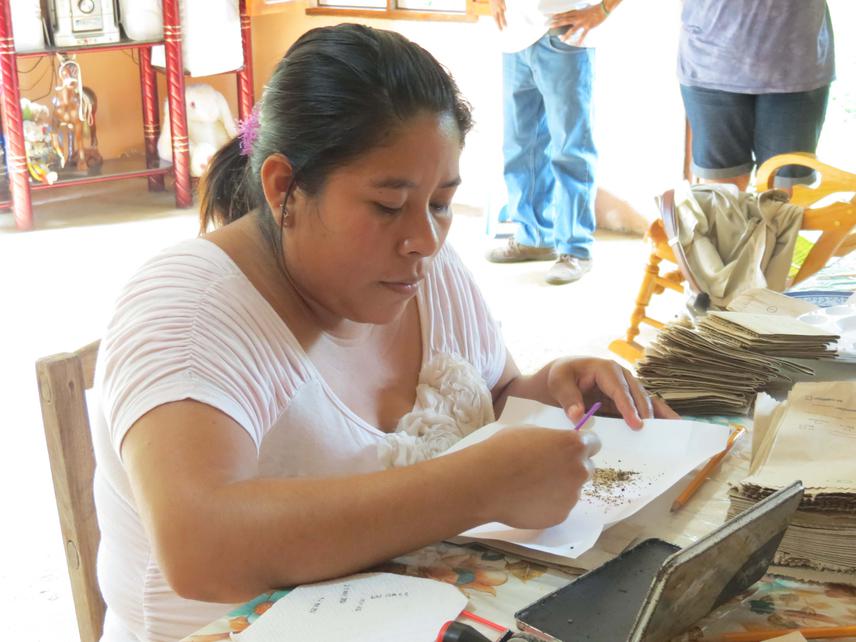Marinés de la Peña-Domene
Other projects
12 Jul 2011
Building Bridges between Tropical Rain Forest and Cattle Ranchers: Creating Incentives for Overcoming Forest Regeneration Barriers
We aim to regain connectivity between increasingly isolated forest fragments, generating an integral landscape management scheme through the participation of local communities.

Maribel seed prossesing.
Deforestation and habitat fragmentation driven by food production systems put tropical forests at universal risk of destruction. Conventional grazing systems, the main economic activities in many tropical regions, are in urgent need of transformation to become more productive and environmentally friendly. Maintaining regeneration potential in highly fragmented landscapes is critical for conservation. Our work takes place in Los Tuxtlas Reserve a region consisting of a matrix of pastures, forest fragments and continuous forest where connectivity between increasingly isolated fragments has been lost. Our goal is to bring together community participation in a conservation project that favors landscape connectivity but also profits local community farmers.
In Los Tuxtlas Reserve, a biodiversity hotspot, we use plantings of economically valuable trees within the pasture systems. These plantings of animal-dispersed trees attract fruit-eating animals that bring seeds from the forest, accelerating forest succession in pastures. Our planted plots work as stepping stones connecting the fragmented landscape, assisting conservation of tropical species and maintain integrity of forest communities. With these plantings we have decreased dispersal limitation by increasing the visitation of animal-dispersers and the influx of forest seeds. However, establishment limitation is still limiting due to severe competition with exotic grasses.
In this phase of our project we will improve our experimental design to overcome establishment limitations. Additionally we will apply a communication strategy to increase the number of landowners applying this management strategy. We are engaging the local community throughout the project to achieve maximum participation. In order to achieve our project goals, the results of our pilot studies should be adopted by the communities increasing the project impact to a higher scale to which conservation of tropical rainforest species can be less threatened by habitat fragmentation. With a higher participation from the local communities we can regain connectivity between increasingly isolated forest fragments and reverse accelerating degradation. As an alternative to conventional food production, high quality matrix with patches of high diversity of native vegetation can persist along with small-scale sustainable farming systems to form an integrated landscape.